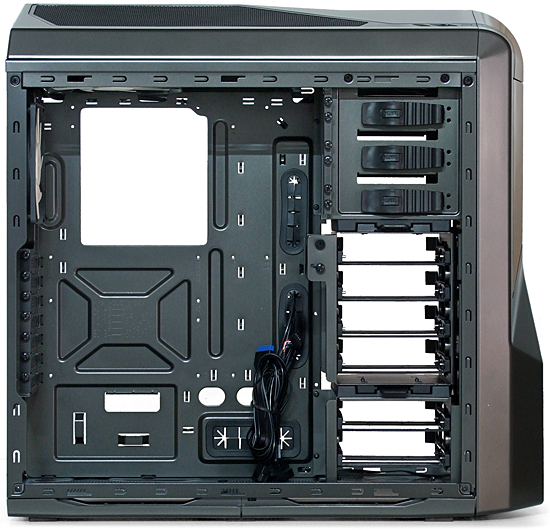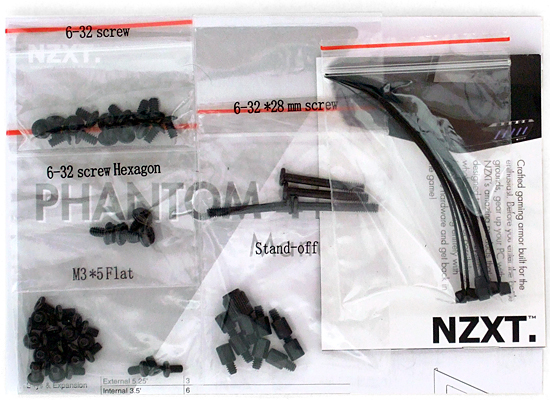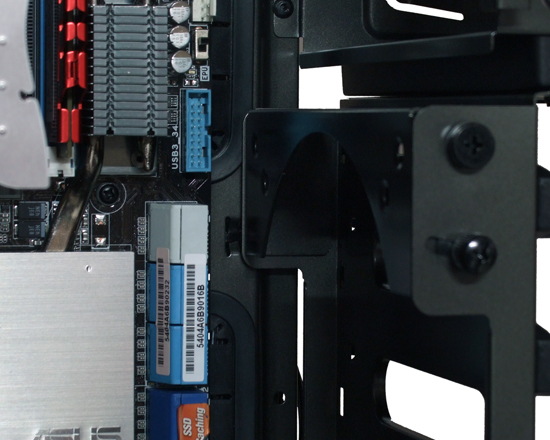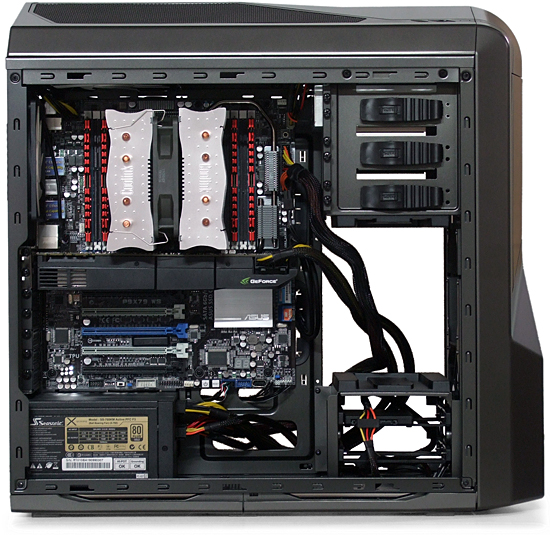Five Gaming Cases Between $80 And $120, Reviewed
Building With The NZXT Phantom 410
NZXT designed its Phantom 410 with a removable hard drive cage, expanding the case’s normal 11.8” card space to 16.8” in the top five slots. Builders lose four internal bays as a compromise.
With both USB 2.0 and USB 3.0 headers in the mix, NZXT cleans up visible cable clutter by paring back the front-panel audio connector to HD Audio-only. A second bunch of cables connect four of the front-panel fan controller’s six leads to optional fans, while the other two leads are factory-connected to included fans.

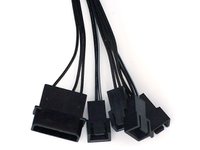
NZXT was kind enough to separate all of the Phantom 410’s installation hardware into separate bags.
Hard drives are removed from the reverse (right) side of the Phantom 410.


The Phantom 410 offsets 2.5” drives to one side of the tray. That'd be a necessary concession if the case had backplanes. It doesn't, though. Nevertheless, you still have to take a few seconds to remove the corresponding 3.5” mounting pins from their keyholes prior to screwing the smaller drive in place.
A sliding latch unlocks the 5.25” bays; pulling the latch releases its pins. The Phantom 410 secures external drives on only one side.
An internal fan bracket reduces top-slot card clearance to 10.8”, blocking access to the SATA connectors of our slightly-oversized motherboard. The bracket can be pivoted or removed.
Get Tom's Hardware's best news and in-depth reviews, straight to your inbox.
Although removing the fan bracket may have helped our SATA cables fit, the extra width of our motherboard blocked access to needed cable entry holes. We removed the center drive cage to make room for cables to pass through, and didn’t bother to replace the lower cable hole’s grommet when we found that merely bumping it caused it to fall out again.
All cables holes have rolled edges, making the grommets superfluous anyway.
While this editor prefers cases without drive doors, it’s difficult to argue against the look NZXT achieved with the front of its Phantom 410. The upper part of the finished system looks brighter than normal for a different reason…
A multi-colored LED fan adds a little visual excitement, brightens up the look of our installed components, and is lit softly enough to prevent annoying distraction. The lighting can’t be disabled, but turning down the fan speed makes it appear dimmer.
Current page: Building With The NZXT Phantom 410
Prev Page Building With The MSI Stealth Next Page Building With The Xigmatek Midgard II-
Ramlethal why is it between 80 to 120 if the most expensive ones are 410 and stealth priced at 100 ?Reply -
Crashman Reply
Because it was written four years ago?19046365 said:why is it between 80 to 120 if the most expensive ones are 410 and stealth priced at 100 ?
-
Tschrom Honestly, that's probably still true today, if not even cheaper. You can find good quality Full ATX cases for around $80 now, and to spend that much ($410) on a case is just a waste of money. If you really know what you're doing, you don't need to spend anywhere near that much on a case just to house your components. I'm using a Thermaltake Versa H22 SE, which is pretty small (only a mid-ATX case and cheap at only $40) in regards to cases, yet I am able to keep everything quite cool and even made some manual customizations to the case to ensure everything fits well and works well. And I'm using only Air Cooling. Really the case you use comes down to "do the components fit, and is there adequate cooling". Even then, the cooling part can be adjusted to what is necessary with some manual customizations or even just so much as ensuring that your case fans' CFM is adequate for cooling of your currently installed components (or water, but water cooling doesn't work in my current setup so I have no opinion on that).Reply
